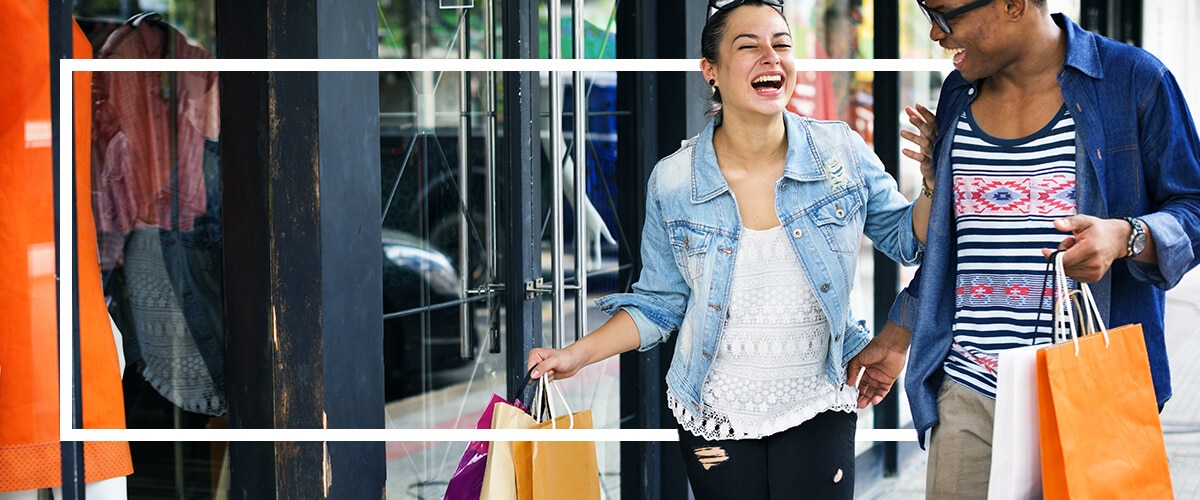In 2024, the retail landscape is coming full circle, with brick-and-mortar (B&M) stores making a resurgence. More online retailers are opening physical stores to complement their ecommerce businesses, fostering a ‘‘halo effect.’’ After a decade where ecommerce rapidly took center stage, transforming consumer behavior and leveraging technological advancements, brick-and-mortar stores are making a big comeback.
This clicks-to-bricks trend addresses the ever-growing demand for personalized shopping and immersive shopping experiences that today’s customers are accustomed to. Let’s explore and discuss the meteoric rise of the brick-and-mortar trend, the factors fueling it, and the brands that have successfully managed the online-to-offline transition.
Contents
The rise of physical stores for online retailers
Consumers’ continued preference for in-person shopping is prompting online-first ecommerce retailers to open brick-and-mortar stores. Despite the unprecedented growth of ecommerce stores in the past decade, physical stores still account for the majority (83.7%) of U.S. retail sales, according to eMarketer.
Surprisingly, Gen Z shoppers — who’ve grown up in a digital world — favor in-store shopping, which accounts for almost 78% of their total shopping dollars spent. They’re a close second to Boomer shoppers, with just over 78% of their shopping dollars spent in-store.
It’s no wonder nine of the 10 leading ecommerce websites are owned by retailers that also run brick-and-mortar stores. All these metrics point to an omnichannel retail future in which almost all digital-native retailers operate physical stores as well.
Many prominent online-only retailers have already opened physical stores, ushering in a new hybrid retail experience. The following is a brief overview of initially digital-only retailers who opened brick-and-mortar locations.
Warby Parker: 200+ Physical Stores and Counting
Warby Parker launched in 2010 as an online-only retailer of eyeglasses, sunglasses, and contact lenses. However, as of April 2024, the company operates 223 brick-and-mortar locations across the U.S. This allows customers to visit a store near them and try on glasses to get the best-fit frame and lenses.
Casper: 66 B &M Stores and Counting
Casper launched as an online-only bed-in-a-box maker and retailer. However, since its inception, the company has opened 66 physical stores across the U.S. and aims to open ten more locations in 2024. In Casper’s B&M stores, customers test out mattresses in private spaces dubbed ‘houses.’ This private testing approach elevates the mattress shopping experience significantly.
Boll & Branch: 5+ Physical Stores and Counting
Boll & Branch started as a digital-only retailer of bed and bath products. The company is on the verge of expanding its physical footprint with plans to open eight more B&M stores in 2024 and 10 in 2025. The physical stores allow customers to touch and feel the brand’s organic cotton bed linens, which are a significant differentiating factor for the brand.
Reasons for the clicks-to-bricks trend
Here’s why more online retailers are opening physical stores globally.
To Enhance Customer Experience
Brick-and-mortar stores offer customers unique shopping experiences that online-only stores cannot replicate. The significant advantage B&M stores hold over online stores is the in-person access to customers. And those same customers get first-hand access to the retailer’s products.
The Tactile or Haptic Advantage
Physical stores let customers enjoy the tactile advantage of in-person shopping by allowing them to touch and feel products before purchasing. The tactile experience shapes consumers’ perceptions of products, letting them confirm the visual appeal they may have been attracted to on the store’s website.
Additionally, physical stores empower brands to practice experiential retail, which takes customer interaction and experience to the next level.
Personalized Shopping Experiences
In-store shopping gives brands more avenues for customizing shopping experiences. It provides an excellent opportunity for one-on-one consultations between customers and sales associates. Customers can inquire about products and watch salespeople demonstrate how they work.
Such first-hand experiences make for better shopping experiences because they’re more engaging and insightful. Further, brands can organize in-store events relevant to their target audience.
For instance, a cosmetic brand can arrange a product launch party for customers to try new skincare products. Such events are more memorable and engaging than customers simply browsing products online.
Omnichannel Strategy
A brick-and-mortar store is the perfect place for brands to roll out their omnichannel retail strategy and integrate ecommerce and physical stores. Omnichannel retail gives customers multiple options, including:
- Buy online, pickup in-store (BOPIS)
- Browse in-store, purchase online (BIPO)
- Ship from store
Omnichannel retail supports the modern purchase behavior in which customers switch between online and offline channels before purchasing. It makes it easy for brands to integrate online and offline experiences seamlessly.
To Enhance Brand Building and Visibility
Brick-and-mortar stores enable retailers to leverage storefront and in-store advertising that enhance brand visibility and awareness. With storefront advertising, retailers can install printed ads on windows or storefront banners to promote their products. Such techniques act as outdoor advertising that can attract massive foot traffic, especially if a store is in a busy area.
With in-store advertising, retailers can deploy techniques such as:
- Digital signage
- Shelf-edge technology
- Overhead announcements
- QR codes
- End-cap displays
- Interactive kiosks
Additionally, physical stores enhance a brand’s trust and credibility with customers since they can test products before purchasing. Customers can also return defective products to the store or request direct customer support from the store’s sales personnel.
To Make Data-Driven Decisions
One thing digital native retailers have in abundance is customer data. Retailers can apply their online shopping behavior data to optimize in-store experiences for their physical shoppers.
More importantly, brick-and-mortar stores let brands collect different types of in-store data, including:
- Personal data like customer names, email addresses, and phone numbers
- Demographic data like race, income, gender, and age
Retailers use in-store customer tracking methods such as radio-frequency identification (RFID) passive technology, wi-fi, cameras, and mobile apps to track shoppers throughout a store until they checkout. Retailers can also ask customers to complete survey forms or embed QR code surveys on receipts, leveraging that information to make data-driven decisions about business strategies.
Challenges and considerations retailers must weigh before making the switch
Online retailers opening physical stores should consider these critical factors:
- Start-up costs: Calculate real estate and operational costs required to set up a physical store.
- Inventory management: Strategize how to balance online and offline channels to guarantee a continuous supply of inventory across all retail channels.
- Relevance: Monitor changing consumer behaviors and expectations to continually adapt how physical stores reflect these trends.
- Store location: Find a strategic location accessible to the retailer’s target audience. The ideal location should have well-established infrastructure, tight security, and access to basic amenities.
The future of retail: hybrid models
Retailers that invest in both ecommerce and physical stores have a better chance of thriving in the retail industry of the future. A hybrid model accommodates the preferences of both online and in-store shoppers. Blending online and offline retail channels leads to a superior hybrid retail experience for all customers.
Fortunately, retailers can leverage modern technology—such as fulfillment management systems (FMS) like Logiwa IO—to optimize their hybrid models and facilitate true omnichannel fulfillment.
Logiwa IO:
- Helps retailers optimize operations by supporting extensive ecommerce integrations
- Provides end-to-end network visibility and flexible integrations to simplify ecommerce operations
- Bolsters the efficiency of hybrid fulfillment
Schedule a demo today and see how Logiwa IO can empower your online-to-offline transition.
FAQs about brick and mortar vs ecommerce
Are online retailers ruining brick-and-mortar businesses?
No. The retail industry has enough room for ecommerce and physical stores to coexist and complement each other. More so, 45% of consumers prefer shopping at a brick-and-mortar store, proving there’s room for both models.
What’s the future of brick-and-mortar stores?
Retail trends in 2024 point to a hybrid future in which omnichannel retail takes center stage as more online retailers open physical stores to complement their online presence.
Why haven’t brick-and-mortar stores disappeared?
Most customers prefer in-person shopping over ecommerce, which keeps B&M stores alive. The National Retail Foundation says 72% of customers still rely on physical stores as part of their purchase journey.





